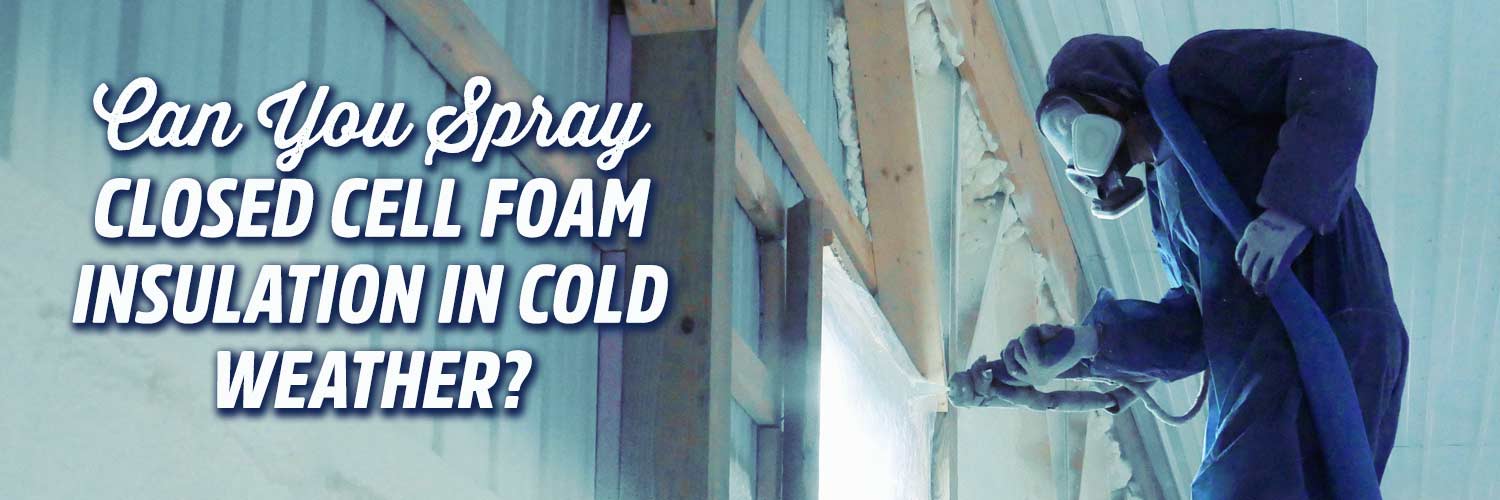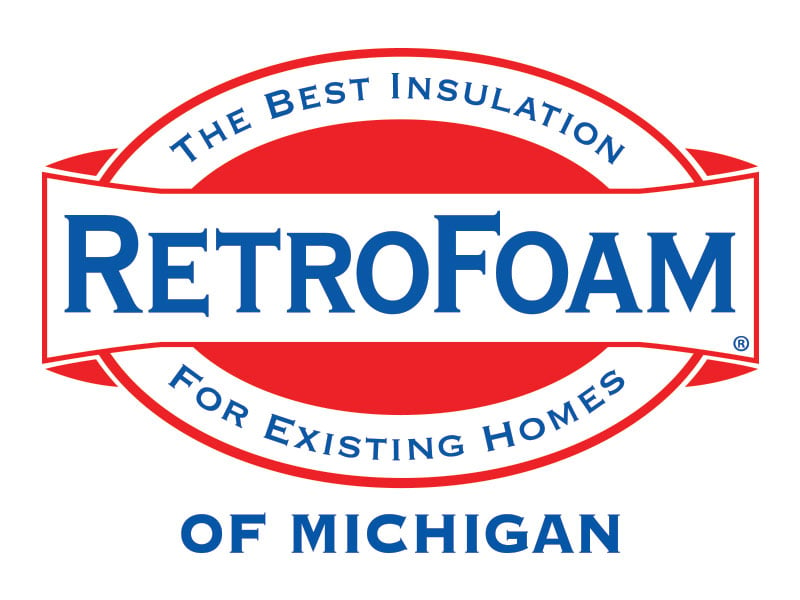Can You Spray Closed Cell Foam Insulation in Cold Weather?


So, you want closed cell spray foam insulation for your pole barn or metal building, but it’s 14 degrees, and you’ve read online that it simply can’t be done.
The Internet strikes again! Well, sort of.
The simple and quick answer to whether you can spray foam insulation in a pole barn is yes, but it does come with some complications, specifically when talking about closed cell spray foam and metal structures.
RetroFoam of Michigan has been spraying foam insulation for over two decades, so we have mastered the techniques that allow us to spray a premium product no matter the temperature. With that being said, just because we can doesn’t always mean we will.
Several complications can pop up, not to mention the added cost for the homeowner. We will review all of this so you can make the best decision for your project.
Spray Foam Insulation in Winter
It seems like cold weather really makes any job harder, which is the point when we’re talking about with closed cell spray foam.
There are a couple of primary issues when spraying closed cell foam during the winter – low yield and condensation, which leads to adherence problems.
Let’s tackle the low yield first.
Closed Cell Spray Foam Low Yield in Cold Weather
When it comes to closed cell spray foam, its yield may not be particularly high during the winter, which really just means you’ll need more of it to get the coverage you need.
This is especially noticeable when working with metal structures, such as steel, which possess high conductivity. The cold surface essentially shocks the hot closed cell foam, so more product must be sprayed to get the desired effect.
Due to this limitation, the project's timeline is prolonged, along with the potential for additional costs due to increased product usage and required man-hours.
It is crucial to consider these factors when planning these kinds of projects, which is one reason we recommend waiting until the weather gets warmer.
Now, let’s talk about problems with adhesion and condensation.
Can Closed Cell Spray Foam Adhere to Metal in the Cold?
One of the critical challenges when it comes to applying closed cell spray foam insulation in cold weather revolves around its adherence to metal structures.
Closed cell spray foam, while highly effective, can face issues when sprayed onto cold metal surfaces. This is particularly relevant when insulating metal structures like pole barns, commercial buildings, or even residential properties with metal components.
The primary issue stems from the significant temperature difference between the hot spray foam and the cold metal surface. The closed cell spray foam is hot, the metal is cold, and when the two meet, condensation can form, causing issues with adherence.
Depending on the manufacturer's specifications, closed cell spray foam is typically applied at a relatively high temperature, often between 130 to 150 degrees Fahrenheit.
You might recall from science class that when a hot substance meets a cold surface, it can result in condensation. Think about a cold beverage can in the summer, for example. The cold can begins to form condensation on its surface because it comes into contact with the warmer, humid air.
Now, imagine the same principle applied to the cold temperatures of winter.
It's important to note that this condensation and adherence issue isn't exclusive to metal structures; it can also occur with wood surfaces if there's high humidity in the air.
Some might consider preheating the metal structure using devices like Salamander heaters to warm the substrate before applying spray foam. However, this approach may exacerbate the problem because it still involves the issue of hot meeting cold on the substrate, potentially causing more condensation. Additionally, these heaters can introduce a significant amount of moisture into the air, further complicating the insulation process.
Insulation contractors must take precautions to address these challenges and ensure a successful closed cell spray foam insulation application in cold weather. This includes maintaining the trailer's temperature where the product is mixed and ensuring the spray foam lines stay warm to avoid temperature-related issues.
At What Temperature Can Spray Foam Insulation Be Applied?
Now you’re wondering if there really is a cutoff for temperature and spraying foam insulation.
Well, yes and no.
Some manufacturers recommend not spraying closed cell when it’s cold outside. Basically, they are saying once it gets below a certain temperature, then you’ll have a cold substrate and risk creating condensation.
As manufacturers, they have to state this because they don’t know the contractor’s level of expertise. An experienced contractor already knows the job will take longer and that they’ll have to use more product to ensure a proper air seal.
Now, how about those temperatures?
Well, those vary depending on the manufacturer. It could be 30 degrees all the way down to 5 degrees, depending on the material.
Insulating Your Metal Structure
While closed cell spray foam insulation can be applied to metal buildings in cold weather, knowing the potential challenges and added costs is essential.
The temperature difference between the hot spray foam and cold substrates, particularly on metal structures, can lead to condensation issues, increased costs, and potentially compromised adhesion. Unless it's an urgent need, we recommend waiting until the weather warms up.
Why? Because waiting for milder weather eliminates many potential issues associated with installing spray foam insulation in cold conditions. You'll likely avoid problems related to condensation, reduced expansion rates, and added expenses due to the extra product required.
When the weather warms up, the application process becomes smoother, more efficient, and potentially more cost-effective. It's a win-win situation for both homeowners and contractors. Plus, you can enjoy the benefits of closed cell spray foam insulation without the added stress and complexities that cold weather can bring.
If you'd like to explore more about closed cell and open cell spray foam insulation, including their respective benefits and applications, check out our Learning Center on our website. We're here to provide you with the information you need to make informed decisions about your insulation projects, no matter the season.
So, until the temperatures rise, remember that spring and summer offer the ideal conditions for achieving the best results with closed cell spray foam insulation.
Related Articles
Open Cell vs Closed Cell Foam Insulation: Which is Better for My Home?
The Most Frequently Asked Questions and Answers About Spray Foam Insulation for Pole Barns
Pole Barn Insulation Problems: 5 Issues to Keep an Eye Out For
About Amanda Emery
Amanda previously has worked as a breaking news and crime reporter, TV news producer, and editor in Flint and Detroit. Throughout her career as a journalist, she has won several awards from The Society of Professional Journalists - Detroit Chapter and the Michigan Press Association. As part of the RetroFoam of Michigan family, Amanda uses her experience as a journalist to write content that will help educate homeowners on the benefits of foam insulation. When Amanda isn’t writing, she’s spending time with her husband and rescued huskies. She also loves knitting, making art, cooking, and hosting dinner and a movie night for friends and family.


